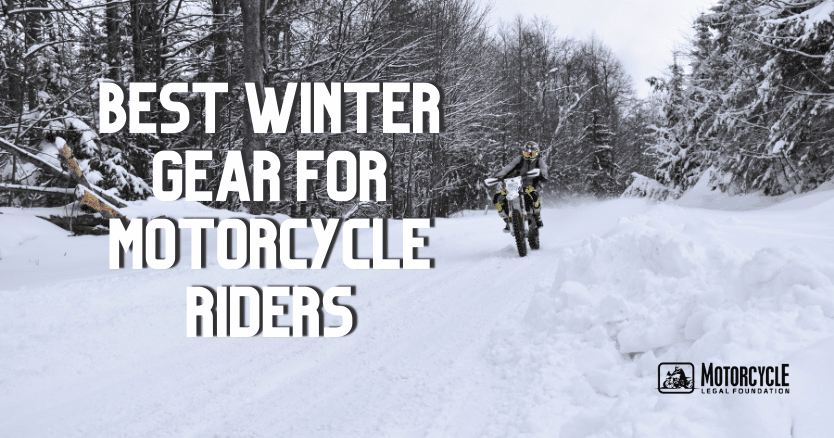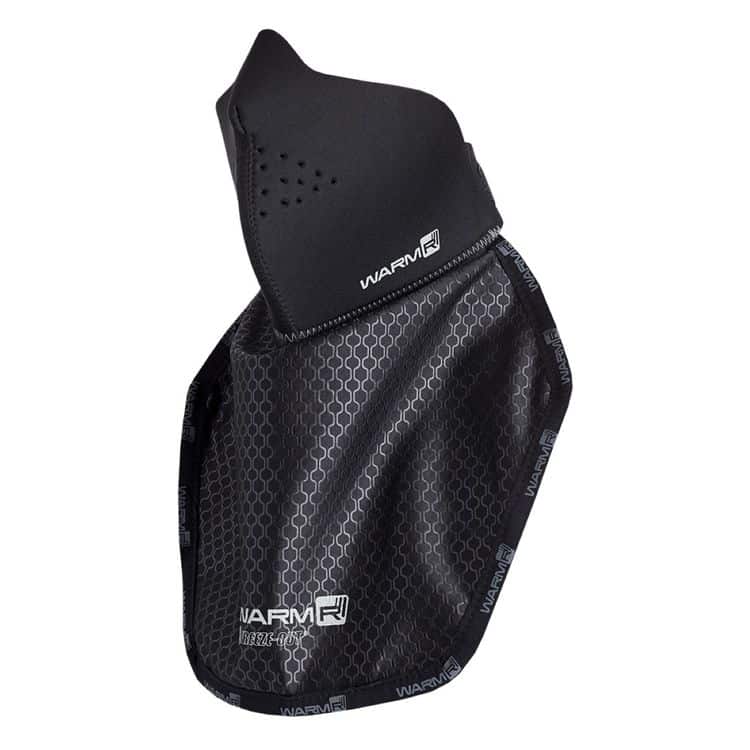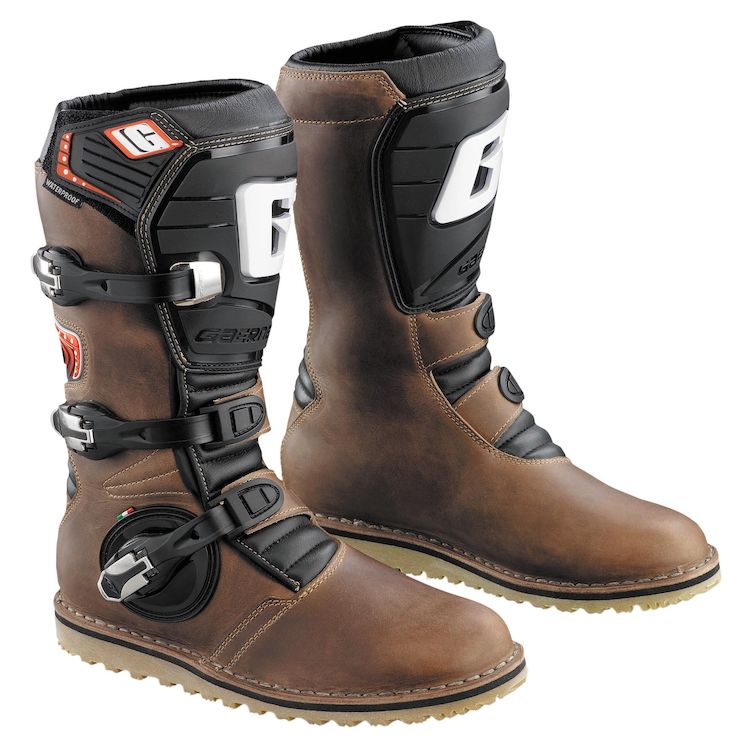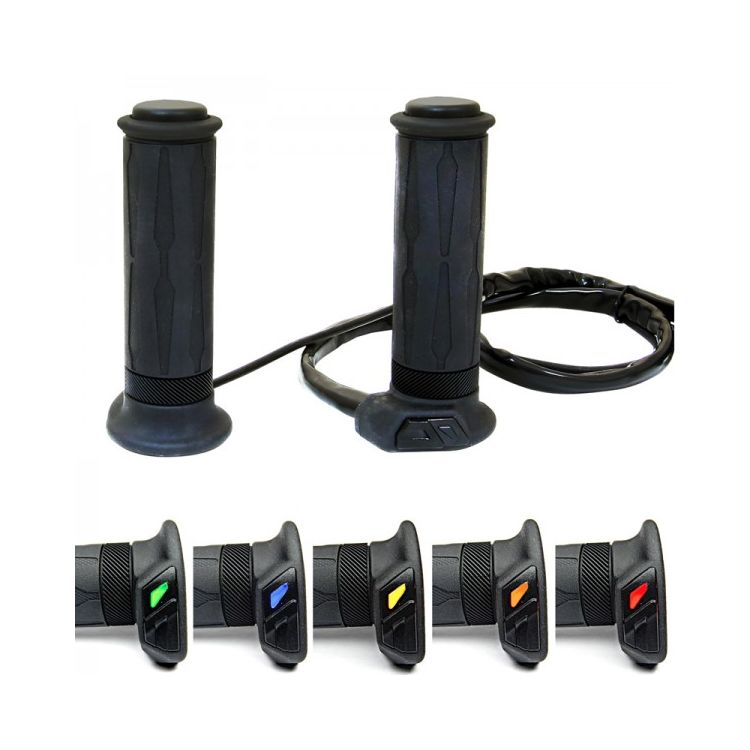Instead of clearing out space in the garage and preparing your motorcycle for winter storage, make this the year when you brave the colder temperatures to explore new places or revisit some of your favorite destinations. It’s possible as long as you have the proper winter gear for motorcycle riding and know the precautions to take to ensure that you and your favorite motorcycle get home safely without suffering any damage.
Here is a reality check to get things started: Riding in cold weather is an absolutely miserable experience. It also can be dangerous if instead of paying attention to controlling your motorcycle, your focus is on how cold and uncomfortable you feel.
Well, it is possible to ride during the winter provided you have the proper winter gear for motorcycle riding, and you follow some basic motorcycle safety tips. This article gets you ready for winter riding with a few riding tips along with recommendations to help you choose the best deals for the best motorcycle gear for winter. If that’s not enough, we’ve also included a section about layering clothing, which is essential for remaining comfortable with the changing temperatures and weather conditions you’re likely to experience when riding in the winter.
Why Should You Ride Your Motorcycle During Winter?
When cabin fever strikes, and you know it eventually will, taking your motorcycle out for a ride is a great cure. An added bonus to winter riding is the opportunity to visit and enjoy popular destinations at a time of the year when traffic and crowds are lighter than you would encounter during warmer months.
Just keep in mind that riding a motorcycle exposes you to the elements, which includes winter temperatures that feel even colder because of the windchill generated by riding. For example, an air temperature of 45 degrees actually feels like 32 degrees on exposed skin when riding at 55 mph, so protecting yourself by wearing the right winter motorcycle gear is essential to avoid discomfort and frostbite.
Besides wearing a leather jacket and other winter riding gear, you also need to make adjustments in the way you ride to accommodate hazards of winter riding. Choosing a bike that is not too big or too heavy for you is one thing to do regardless of the season. Some of the adjustments to make in the way you ride include the following:
Reduce speed
Icy or snow-covered roadways make it difficult to control and stop a motorcycle, so reduce your speed. Even on days that temperatures are about freezing, sand build up from ice-control measures used by highway crews may increase stopping distances.
Do not tailgate
Following too close behind other vehicles is never a good idea at any time of the year, but it increases the risk of a crash when you do it during the winter months. Ice, snow, rain, and sand alone or in combination make road surfaces treacherous for a motorcycle rider by increasing stopping distances and the likelihood of skidding.
Reduced visibility
It’s harder to see and be seen during winter months. Reduced daylight hours increase the chance that you will be riding in the dark or in low-light conditions, which makes it harder for other motorists to see you. Adding winter riding gear that has reflective materials or wearing a reflective vest over your clothing makes you more visible to other drivers.
Winter riding requires you to focus more on having the safest motorcycle, being careful while riding, and wearing the right gear for the weather conditions.
Winter Motorcycle Gear Layering
Staying warm and dry are the primary reasons for investing in motorbike winter gear if you expect to be comfortable and safe when extending your riding season to take on cold and wintry weather. The trouble with winter is that weather conditions, including the temperature, frequently change throughout the day.
It may be in the teens in the morning when you begin your ride and warm up to a balmy 50 degrees by lunchtime, or a warm and dry morning may turn into a cold afternoon with rain, sleet or snow. Checking the weather forecast is one way to know about the weather conditions you may ride into, but another way to be prepared while staying dry and comfortable is by layering.
Layering is essential for winter riding because it prepares you for whatever weather conditions you happen to encounter. Layering starts with a thin layer of clothing worn next to your skin to wick away moisture. The effort you put into controlling your motorcycle causes you to perspire and make your clothing wet. Wet clothing against your skin can lead to hypothermia, which is a serious medical condition causing your body temperature to drop to dangerously low levels.
The best way to dress for winter riding is by dressing using the following layering approach:
Base layer
The base layer is the one in direct contact with your skin, so you want it to be thin and snug fitting to retain body heat while also being capable of wicking moisture away from your body. It should be made of a synthetic or natural material that dries quickly.
Mid layers
The purpose of the first mid layer of clothing is to retain body heat, so it should be lightweight and thin enough not to add bulk as you add other layers of clothing. A secondary mid layer of clothing may be added when riding in cold temperatures hovering at or below the freezing mark. A heated jacket or a down jacket would be examples of options that you may wish to consider.
Outer shell
The final layer of clothing does not focus on warmth as much as it does protecting you from wind, rain, snow, and sleet. It needs to be windproof and waterproof.
Don’t forget about your hands when planning how to layer your riding gear for winter. Mittens may be a better option than gloves to retain body heat in colder temperatures because, but the addition of glove or mitten liners add an extra layer to keep you warm and wick moisture away from your hands. Glove and mitten liners also make great stocking stuffers as gifts for the holidays.
Essential Elements for Cold Weather Motorcycle Gear
What you need to stay warm and dry on winter motorcycle rides is up to you, but there are a few essential elements you should keep in mind when preparing to take to the roads instead of storing your motorcycle for the winter:
Jackets
The best winter motorcycle jackets provide protection from the elements as well as protect your skin from scraps and cuts in case of an accident. You can find the best cold-weather motorcycle jacket in either natural leather or synthetic materials.
Gloves
Whether your preference is a glove or a mitten, there are plenty of winter versions available. When choosing something to wear to keep hands warm and dry during winter rides, they must be tough enough to protect your hands from injury in a crash while also providing the flexibility needed to work the controls of the motorcycle.
Headgear
A motorcycle helmet helps to reduce the severity of injuries in a crash, but it does not keep you warm during winter months, so you need to wear something to protect your head and neck from the cold. A balaclava is one option because there are styles available that cover your head, mouth and neck with one garment to protect exposed skin and warm the frigid air before it reaches your lungs. You can also opt for just a helmet liner made of synthetic materials to keep your head warm while also wicking away moisture.
Boots
What you wear on your feet must protect you from the wind, rain, snow and cold temperatures you face when riding during the winter, but boots also need to offer stability and traction to prevent your feet from clipping on wet surfaces and loose sand while protecting feet and ankles in case of an accident.
Heated grips
A flick of a switch activates heating elements to keep your hands warm on even the coldest winter day when you have heated hand grips. One drawback to heated grips is that they only warm the palms and underside of the fingers, so if that is a concern for you, heated gloves in addition to the heated grips might be an option.
Heated inner sole
Any outdoor winter activity is more enjoyable with warm feet, and winter motorcycle riding is no exception. Heated inner soles fit into your boots and are battery-powered.
Heated visors and face shields
Battery-powered face shields and visors fit onto your helmet and provide a clear field of vision when activated. Electricity passing through the device clears mist and condensation, so you can see clearly without having to raise the visor to clear it.
If you are uncertain about the best cold weather motorcycle jacket or other piece of winter riding gear to buy, the next section has top recommendations to use as a guide.
Top Recommendations for Cold Weather Motorcycle Riding Gear
Depending on what you need and how much you wish to spend, there is an abundance of motorcycle riding gear for winter from which to choose. Use the following recommendations for guidance about what to choose and places where you can find what you want:





















